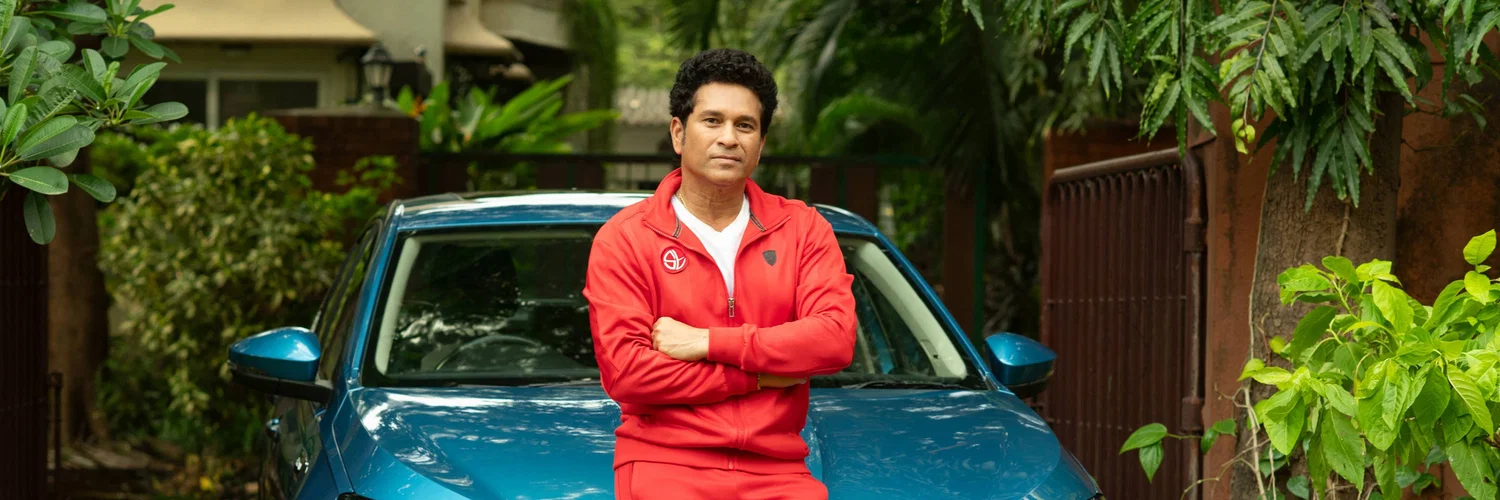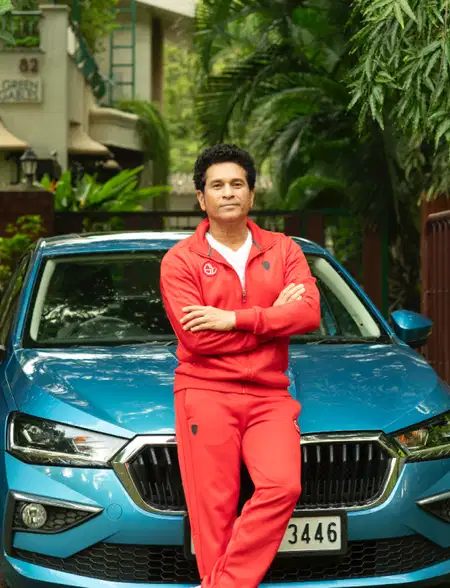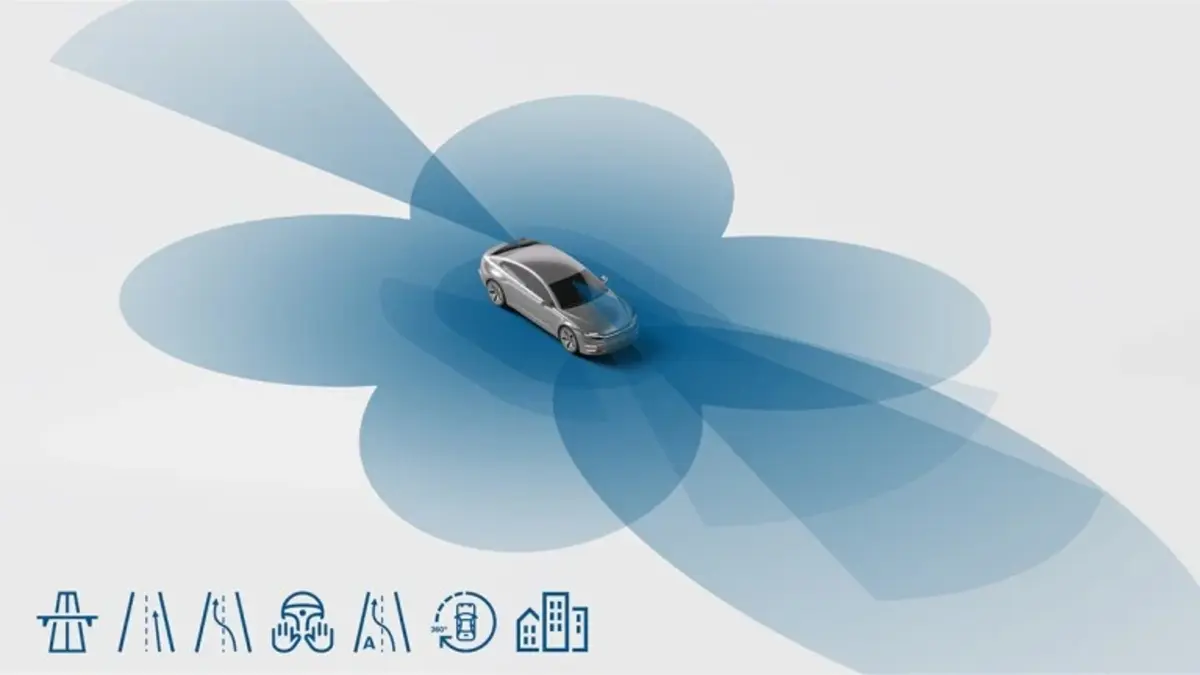Cruising on the highway to the beat of your favourite song – isn’t that an experience we all crave every once in a while?
However, manually maintaining the speed of your car with the accelerator pedal becomes tiring and uncomfortable over long distances.
Enter ‘cruise control’ – a feature that is becoming increasingly popular in higher-end car variants. Curious to know what exactly this feature does and whether it’s worth having? Read on.
Table of Contents
- What is cruise control?
- How to use cruise control?
- Advantages of cruise control in a car
- Disadvantages of cruise control in a car
- Adaptive cruise control
- Adaptive cruise control vs cruise control
- Summary
- FAQs about cruise control
What is cruise control?

Cruise control is a system that maintains car speeds set by the driver without requiring them to press the accelerator pedal. Moreover, it doesn’t let the car go above or below the set speed unless the driver presses the brake or accelerator pedal.
The function of cruise control is an automatic replication of the way a driver manually controls a vehicle’s speed. Early cruise control systems worked with a cable and an actuator to control the throttle valve.
Today’s modern cruise control systems have replaced the cable with various sensors connected to an ECU (Electronic Control Unit). When the driver sets a speed, the ECU computes the driver’s input to the throttle and then configures the throttle accordingly. The system invariably maintains the speed set by the driver and adjusts the throttle configuration for the set speed to remain unaltered by the changing road conditions.
How to use cruise control?

Before activating the cruise control in a car, check for adverse weather conditions. Refrain from using cruise control at high speeds during rains as low visibility and unpredictable road conditions make driving unsafe.
Nevertheless, the following steps will help you understand how to use the cruise control system in your car:
- Step 1 – Accelerate the car to the speed you’d like to set. Be mindful: do not cross the speed limit of the road or highway.
- Step 2 – Once the car reaches the desired speed, activate cruise control by pressing its button which is either on or near the steering wheel. Remember to locate the button before deciding to activate cruise control.
- Step 3 – Take your foot off the accelerator pedal as the car doesn’t need your input anymore to maintain a constant speed.
- Step 4 – While driving, keep your eye on the road and be prepared to react to changing road conditions. Be ready to push the brake if you encounter an obstacle.
- Step 5 – If you want to accelerate, you can press the given ‘+’ (plus) button.
- Step 6 – If you want to decelerate, you can press the given ‘-’ (minus) button.
- Step 7 – If you even slightly press the brake pedal, the car should deactivate the cruise control.
The buttons to engage cruise control, accelerate, and decelerate vary from car to car. So, remember to check before getting behind the wheel.
Advantages of cruise control in a car
The cruise control feature is meant to minimise drivers’ fatigue while driving long distances, by keeping the car running at a constant speed without any manual input. The driver doesn’t need to keep the accelerator pedal pressed and can let their foot relax. Cruise control is mainly used on highways when it can be engaged for longer durations.
Increases mileage
When a car runs at a constant speed, its engine also operates at constant RPMs (Revolutions per minute). With fewer fluctuations in speed and RPM, fuel consumption is also controlled to a great extent, helping to increase your car’s mileage on long highway journeys.
Helps you drive safely
Drivers usually tend to cross the speed limit on clear, endless highways. With cruise control, you can set your speed below the highway’s speed limit and travel safely.
Effortless control
To increase or decrease the speed of your car, you generally use the accelerator and brake pedal. While on the highway, you may want to adjust the speed to match the road conditions. A cruise control system’s speed can be controlled with buttons on your steering wheel, giving you adaptive control on the road. More expensive cars are also equipped with adaptive cruise control, where this operation is done automatically.
Disadvantages of cruise control in a car
Limitations of Indian roads
Cruise control is a feature best suited to wide, long, smooth, and (most importantly) clear highways. While India has a fantastic network of smooth highways, one may face obstacles such as cattle, dogs, etc. along the way. Moreover, many people disregard the regulations and speed limits and jeopardize highway journeys.
Increases reaction time when you need to be quick
Due to the uncertainty on Indian roads, you never know when you might need to press the brake pedal all of a sudden. If you encounter an emergency while cruise control is activated, it might take you slightly longer to apply the brakes and save yourself from an accident.
It can lead to drowsiness
With activated cruise control, the car can remain at a constant speed for as long as you want. As the cruise control reduces active involvement in driving, your alertness level may drop which eventually leads to drowsiness. We highly recommend disengaging cruise control every 10 to 15 minutes.
Adaptive cruise control

A level 1 autonomous driving technology, adaptive cruise control uses radar sensors to evaluate the difference in speed and distance from the car ahead. For instance, if the vehicle ahead of your car slows down or speeds up, with adaptive cruise control your car will reduce its speed or accelerate to maintain the set distance from the preceding vehicle. Adaptive cruise control is usually found in premium cars. However, it has now trickled down to some premium passenger cars such as the Mahindra XUV700, MG Gloster and MG Astor.
Adaptive cruise control vs cruise control
Cruise Control | Adaptive Cruise Control |
It maintains a constant speed without the driver's input. | It smarty fluctuates the speed of the vehicle to keep it at a safe distance from the vehicle ahead. |
It uses various sensors to configure the throttle | It uses radars to evaluate the relative speed and distance gap. |
It’s ideal for high-speed driving on highways | Immensely handy in highway traffic conditions as it automatically decelerates and accelerates to keep your car at a safe distance from other cars |
Available in most cars | Available mostly in high-end cars |
Summary
Cruise control is a major attraction in variants that come with it, and while it definitely sounds like a dream, it may not be for everyone. So before you decide to get yourself a car with cruise control, understand how it works, its pros, cons, and whether its suited to your needs and environment.
FAQs about cruise control
What does cruise control do on a car?
The cruise control in a car automatically runs it at a constant speed set by the driver and doesn’t require the driver to press the accelerator pedal.
When should you use cruise control?
Remember, while using cruise control you must be able to see the road ahead as clearly and as far as possible. Cruise control should be avoided in rainy conditions.
Is cruise control good for your car?
Cruise control has its pros and cons. While it reduces your effort considerably as you don’t need to keep your foot on the accelerator pedal, at the same time, you need to remain as alert as possible to the unpredictability of Indian roads, for example, cattle, stray animals, a novice driver who suddenly steered the wheel without checking the cars behind him, etc.
Can I install cruise control in my car?
You might be able to install an aftermarket cruise control kit, but it is not recommended due to safety concerns.



